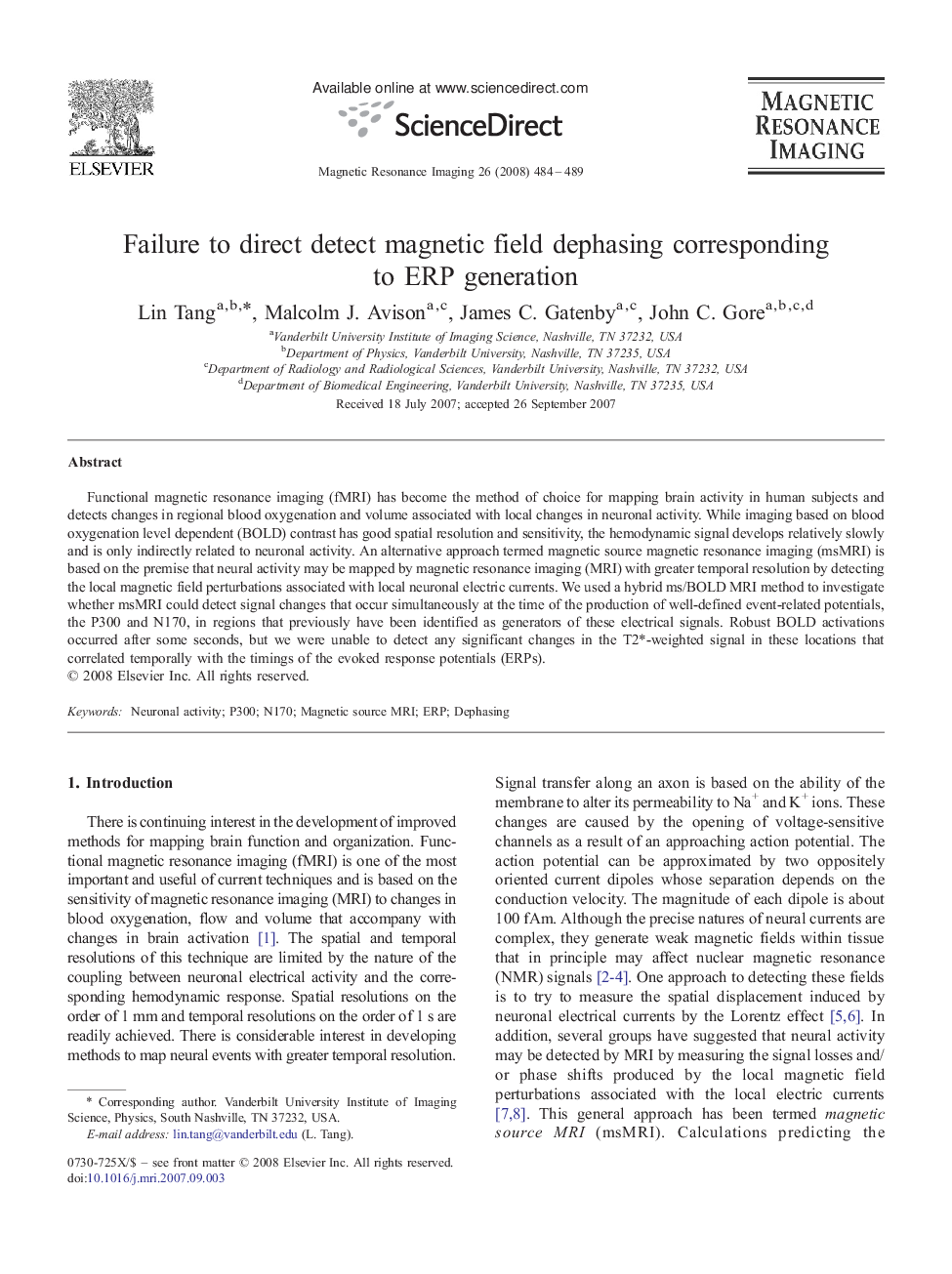| Article ID | Journal | Published Year | Pages | File Type |
|---|---|---|---|---|
| 1807335 | Magnetic Resonance Imaging | 2008 | 6 Pages |
Functional magnetic resonance imaging (fMRI) has become the method of choice for mapping brain activity in human subjects and detects changes in regional blood oxygenation and volume associated with local changes in neuronal activity. While imaging based on blood oxygenation level dependent (BOLD) contrast has good spatial resolution and sensitivity, the hemodynamic signal develops relatively slowly and is only indirectly related to neuronal activity. An alternative approach termed magnetic source magnetic resonance imaging (msMRI) is based on the premise that neural activity may be mapped by magnetic resonance imaging (MRI) with greater temporal resolution by detecting the local magnetic field perturbations associated with local neuronal electric currents. We used a hybrid ms/BOLD MRI method to investigate whether msMRI could detect signal changes that occur simultaneously at the time of the production of well-defined event-related potentials, the P300 and N170, in regions that previously have been identified as generators of these electrical signals. Robust BOLD activations occurred after some seconds, but we were unable to detect any significant changes in the T2*-weighted signal in these locations that correlated temporally with the timings of the evoked response potentials (ERPs).
